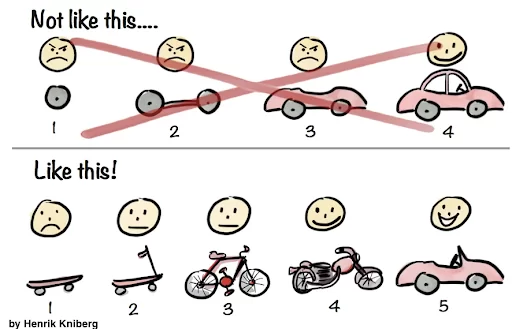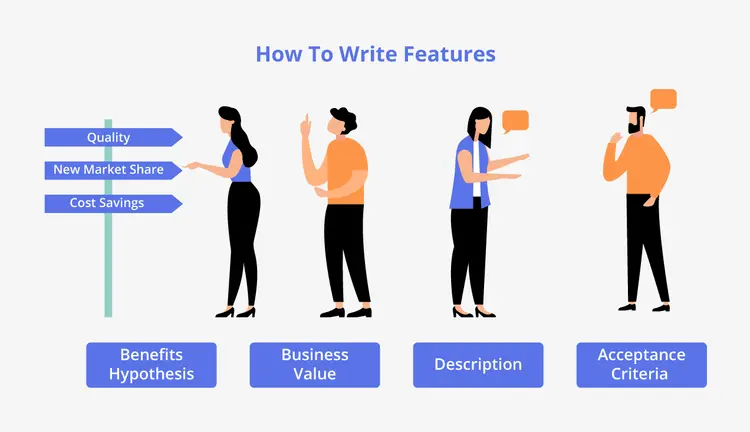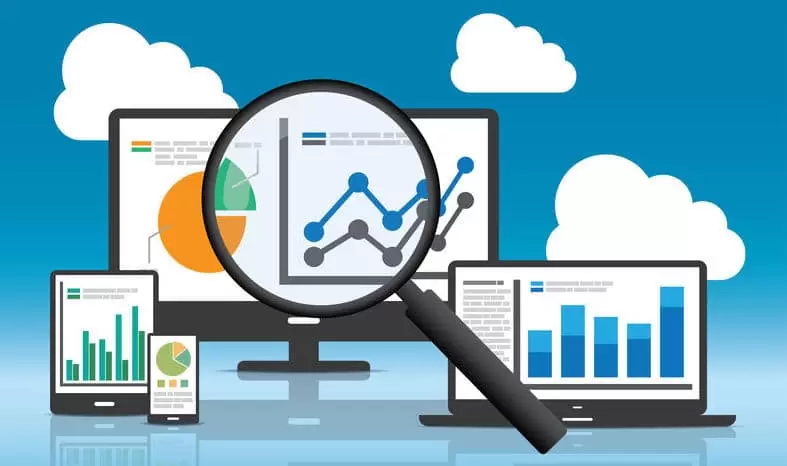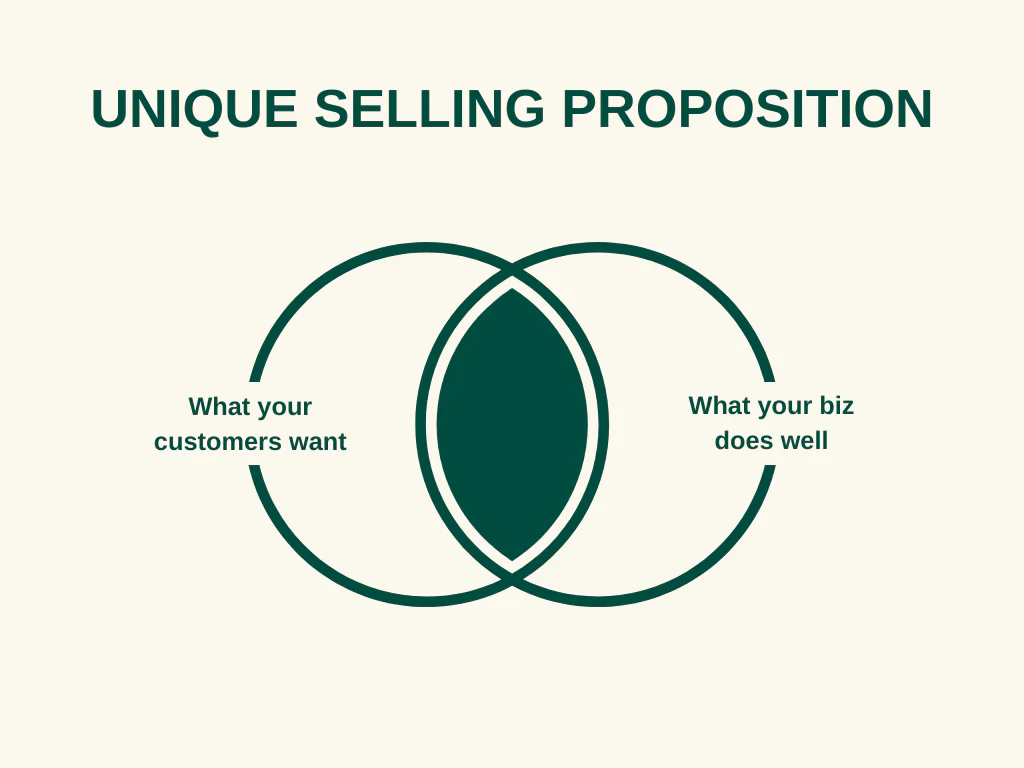How Long Does It Take to Develop An MVP? Factors to Consider
How Long Will It Take to Develop your Product’s MVP
If you’re interested in MVP (Minimum Viable Product), you probably have a digital product in your brain and are planning your go-to-market strategy with a limited budget or time.
If you’re skeptical about going full-fledged with your idea, you’re not the only one. Almost every reasonable entrepreneur is curious about the potential of their product. They seek answers to whether there is a demand for their product. Will customers prefer their competitors over them? And other such questions.
And it’s mindful of being skeptical, considering 35% of the startups fail as there is no market need for their product, and 20% get out-competed.
So, what’s the way out? How can you make sure that your product has the potential to thrive in the market? How do you identify the improvements your product needs before going out in the market?
The modern-word answer to such questions is – to build a minimum viable product, aka MVP.
But you’re not here to get this simple advice, are you? You want to know how much resources and time it would require to build an MVP.
How Long Will It Take to Build an MVP?
It is difficult to be specific because you may have a couple of basic functions in mind or require a lot for your MVP.
If a rough number is all you want, here is your answer – Generally, it takes 3-4 months to build an MVP. But as with everything else in life – “it depends.”
It depends on your product scope, complexity, and customer profile. It depends on the size of the development team you have. It depends on several other factors that are part of an MVP development lifecycle.
So, to help you come to a concrete number, we need to discuss several things related to MVP development. Before we jump on that, here is a chart with specific project types and times:
| Product/Niche/Industry | Est. Time to Build the MVP |
|---|---|
| MedTech Platform | 9 Months |
| Risk Management Tool | 9 Months |
| Lead Generation Software | 8 Months |
| B2B SaaS Platform | 8 Months |
| Digital Workplace | 7.5 Months |
| P2P Marketplace | 6 Months |
| Travel Insurance App/Website | 6 Months |
| Business Loan Fintech Platform | 6 Months |
| Fraud Prevention Platform | 6 Months |
| Entertainment Software | 6 Months |
| Digital Lending SaaS Platform | 5.5 Months |
| Automation Services | 5 Months |
| Sales SaaS | 4.5 Months |
| Web Design Tool | 4.5 Months |
| Home Insurance Platform | 4 Months |
| Onboarding Software | 4 Months |
| Aerospace Marketplace | 4 Months |
| Telecommunication Platform | 3 Months |
| Consumer Electronics | 3 Months |
| Marketing Automation Tool | 3 Months |
| Virtual Office Platform | 3 Months |
| Smart Kitchen Tools | 2.5 Months |
| Real Estate API | 2 Months |
| AI Video Platform | 1.5 Months |
| Virtual Office Platform | 1 Month |
| OS Live Chat Tool | 0.5 Month |
| Email Prospecting Tool | 0.5 Month |
| Job Board for the Space Industry | 0.5 Month |
7 Key Factors That Determine Time it Takes to Build MVP
1. Depends on the Development Team Size
Depends on the Required Feature List
 Source
Source
Although the MVP development time is a result of the number of developers on the team, it isn’t advised to have a large team for this purpose. Designers, testers, and other experts all contribute to the cost, and you don’t want the cost of building MVP to skyrocket.
The best foot forward is to pick the right size of the development team for your MVP.
Many software engineering managers believe the magical sweet spot for MVP development is seven team members. However, according to Agile, team sizes should range from three to nine people, and this includes a project manager, a business analyst, developers, designers, QA specialists, and potentially DevOps, among others.
2. Depends on the Required Feature List
The more the number of features and functionalities you’d keep in your MVP, the more it will take to build it. The functionalities your MVP needs can only be determined by you.
Here is how you can decide on the right features for your MVP:
3. Find Out Your Users’ Biggest Issues

When people require solutions to their problems or challenges, they use software products. Hence, you should start by knowing your target audience’s issues and discomfort points. Consider what your potential customers might have problems with in their everyday lives or at work.
You may discover your target audience’s issues by interviewing them, conducting surveys, or roleplaying. Expert opinions, in addition to interviewing and surveying, are effective methods to discover your target audience’s concerns.
4. Define How Your Product Will Solve the Issues
Find a Unique Value Proposition
What problems does your product solve for your target audience? How can your product address their needs and pain points? Here, the more efficiently your product solves problems, the more valuable it is. For example, if your prospects’ pain points are primarily financial, you might highlight the attributes of your product in relation to a cheaper monthly subscription plan.
5. Research on Your Competitors
Next, you should look into the comparable solutions that companies offer your target audience and analyze their products to figure out what you can incorporate into your MVP to deliver a superior solution.
For example, Spotify and YouTube Music are current music streaming applications that compete with one another. While Spotify enables users to listen to free music with the smartphone screen off and save battery power, YouTube Music does not. This may be one of the minor details that helps them triumph over their competition.
6. Find a Unique Value Proposition
Your MVP should have distinct features to distinguish itself from other comparable solutions. You can select the optimal functions to create a one-of-a-kind item by prioritizing them.
Customers will have a reason to choose your product if you do this. For example, this strategy enabled Uber to complete 14 million trips each day, thanks to their ‘one-tap taxi without phone calls’ feature.
7. Lastly, Use MoSCow Matrix to Prioritize Your Features
Among all the feature prioritization techniques, MoSCow is the most simple one and can help you list the required features with no hassle.
This prioritization technique consists of ‘must have, should have, could have, and won’t have this time,’ which can be used to section all MVP features into four categories.
The must-have group consists of mandatory components. Functionalities in the should-have category are not required but are still crucial. Nice-to-have functions belong to the could-have category. Lastly, components that are not currently a priority but may be in the future are included in the won’t have this time category.
How do you build a custom MVP?
Building a minimum viable product (MVP) is essential for any startup or business that wants to validate its idea before investing significant resources in development. But how do you build a custom MVP that fits your specific needs? There are three primary options to consider:
- Hiring a freelancer or team
- Employing an in-house development team
- Finding a software consultancy
Each has pros and cons, and choosing the right option depends on your budget, timeline, and desired level of control.
Hire a Freelancer or Team
Hiring a freelancer or team is often the most cost-effective option for building an MVP. Freelancers and small groups are typically more affordable than larger agencies and may be more flexible regarding project scope and timelines.
However, working with a freelancer or small team also comes with risks. Freelancers may have different expertise or resources than a more central agency, and their availability may be limited if they work on multiple projects simultaneously. Communication can also be challenging if you’re not in the same exact location or time zone.
To make the most of this option, you must do your due diligence when selecting a freelancer or team. Look for individuals or groups with a strong portfolio and positive reviews from past clients. Ensure they have the skills and experience to deliver on your project requirements. Be clear about your budget and timeline expectations, and establish a clear communication plan upfront to avoid any misunderstandings.
Employ an In-House Development Team
Employing an in-house development team is the most expensive option for building an MVP, but it offers the most control over the development process. With an in-house team, you can manage the development process directly and have more control over timelines and project scope. Additionally, you have a dedicated team working solely on your project, which can lead to faster development times and a higher-quality product.
However, employing an in-house team also comes with high costs. You’ll need to pay salaries and benefits and invest in hardware, software, and other infrastructure. Additionally, recruitment and hiring can be time-consuming, and you may need help finding the right talent for your project.
Find a Software Consultancy
Finding a software consultancy is an excellent option to balance cost, control, and expertise. Software consultancies specialize in building custom software solutions and often have experience working with startups and businesses in your industry. They can offer various services, from consulting and planning to development and ongoing support.
Challenges You Might Face While Building an MVP
Building an MVP as quickly as possible is the goal of every business and product development team, but certain hurdles may stand in the way.
Here are some:
Going Scope Creep
A company can easily become a victim of scope expansion. Many times, you become attached to a disruptive concept after you’ve thought of it. It’s hard to reduce the scope down to the bare minimum because you want to present it in all its magnificence to investors and the world in general.
Not to mention the fact that the greater you consider conquering the market, the more likely you are to generate new functions. However, employing this approach may result in delivery delays, put a burden on your budget, and, ultimately, jeopardize the survival of your product MVP.
Hard to Define Minimum Value Proposition
When a business wants to launch a new product MVP, they are often so focused on keeping the initial version simple that they neglect to include important capabilities. While not as typical as scope creep, this drawback is still prevalent – typically as a result of initiatives that don’t concentrate adequately on what makes their target market unique.
Although we’ve seen it a dozen times, it still makes our point. It is not beneficial for consumers to receive a one-wheeled vehicle; rather, a scooter is a better choice. MVP in software development operates in the same manner.

Image Source: Interaction Design Foundation
Inexperienced or Inefficient Team
Even if you believe yourself to be a one-man army, building an MVP is an unrealistic task for you as an entrepreneur on your own. Hence, it’s crucial for you to work with a dependable IT partner who can offer not only a lean strategy and competence but also have experience with fast digital product launches. For starters, the team composition they recommend will match your evolving demands.
The vendor’s expertise in working with companies in various industries is an important factor you should consider when selecting your technology partner.
Moreover, the installation cost and time, future scalability, and community support are all significant in the development of a Minimum Viable Product. Of course, it’s tempting to want the latest and greatest, but hype-driven development can sometimes do more harm than good to your project. We’ve already discussed how you can prioritize your feature list; you should confirm the development time for each one from your technology partner. This will allow you to prioritize even better.
In a Nutshell
Prior to beginning the creation of your digital product’s MVP, you must define the scope of your MVP. Having a thorough understanding of the product development life cycle is just as important as visualizing the project in its various phases. Here, be as specific as possible when describing the scope, and clear up any doubts as soon as they arise.
MVPs serve as airbags, allowing you to estimate a product’s economic and technological potential as well as implement it. You can make commercial and technological decisions based on evidence rather than speculation, thanks to MVPs.
If you’re looking for a development partner to help you with the MVP development process, Innovify is among the best choices.
We can guide you through the MVP development process and help you with problem definition, market research, prototyping, and feedback collection.
We have years of experience in building software prototypes and MVPs before we roll them out to success.





